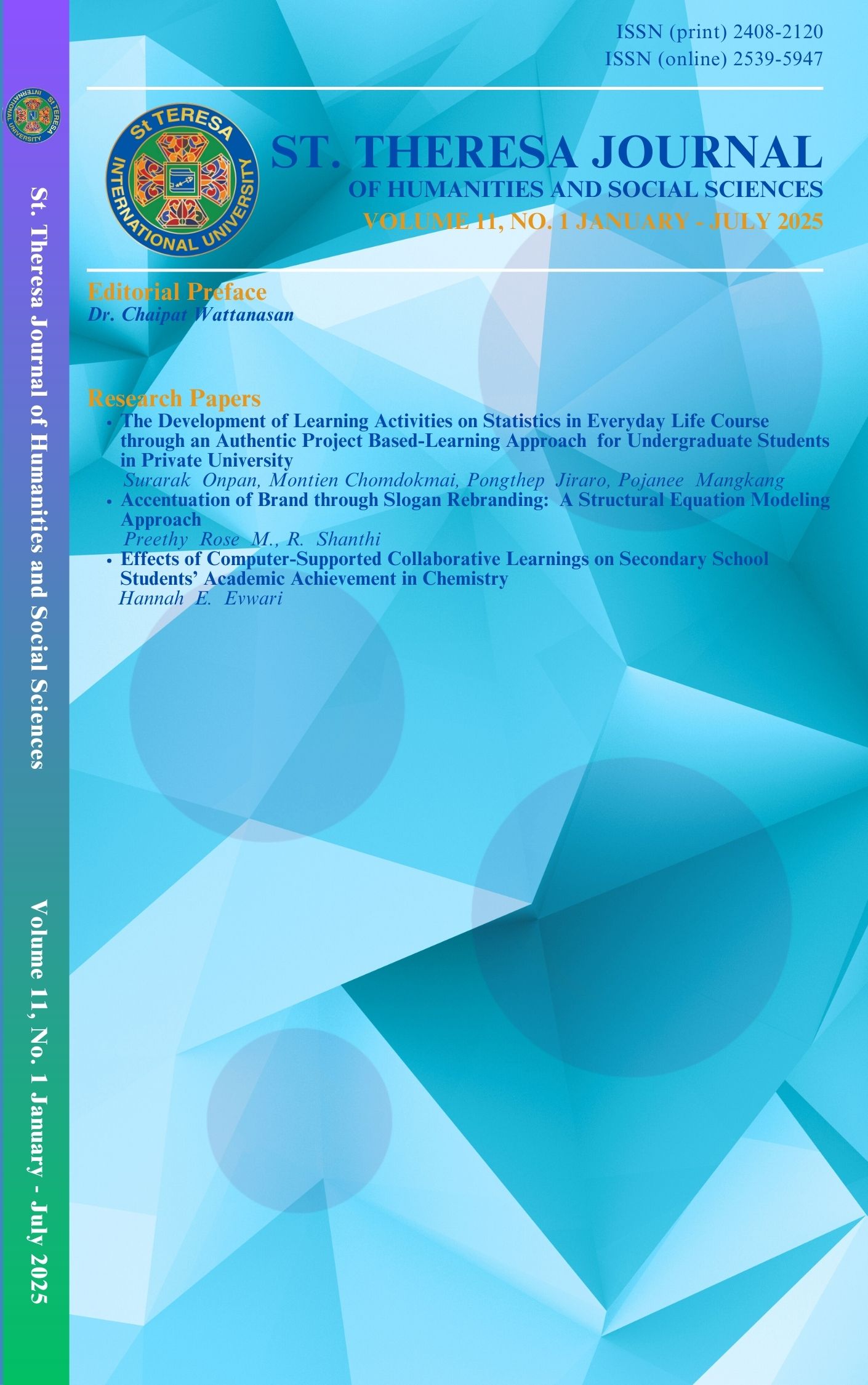Thai Youth Cinema as Cultural Evidence: Social Well-Being and Everyday Connectedness in Bundit Rittakol’s Films
Keywords:
Bundit, Youth Film, 1980s, 1990s, Social Well-beingAbstract
This qualitative study revisits Bundit Rittakol’s youth films from the 1980s and 1990s to explore their cultural role in promoting social well-being an aspect largely overlooked in Thai film scholarship. The research adopts a detailed investigation of four selected films, including Khu Wun Wai Wan (1986), Bunchu Phu Narak (1988), Bunchu Hog, Lok Ni Di Ok Sutsuai Narak Nayu Tha Ngui (1991), and Anueng Khitthueng Pho Sangkhep (1992). It aims to explore how Bundit’s youth films represent values of inclusion, friendship, and emotional resilience and reposition Thai youth films as tools that contribute to cultural continuity. The study employs a combination of textual and contextual analysis to scrutinize narrative structures, character relationships, and cultural references in the selected films. This dual approach enables a nuanced understanding of how cinematic elements reflect and shape Thai concepts of social well-being. Rather than portraying well-being as an institutional or imported ideal, this study demonstrates that it emerges organically from daily interactions, traditions, and cinematic storytelling. The analysis situates Bundit’s work within broader discourses of Thai soft power, cultural identity, and emotional connectedness.
References
Akyüz, Y. (2000, February 17). Causes and sources of the Asian financial crisis. Paper presented at the Host Country Event: Symposium on Economic and Financial Recovery in Asia, UNCTAD X, Bangkok, Thailand.
Aligw, H. N., Nwafor, K. A., & Alegu, J. C. (2018). Stuart Hall's encoding-decoding model: A critique. World Applied Sciences Journal, 36(9), 1019–1023.
Arowolo, O. (2017). Understanding framing theory. Nigeria: School of Communication, Lagos State University.
Buckingham, D. (2008). Introducing identity. In D. Buckingham (Ed.), Youth, identity, and digital media (pp. 1–24). The John D. and Catherine T. MacArthur Foundation Series on Digital Media and Learning. US: The MIT Press.
Chummuangpak, M. (2004). The narrative of Thai popular comedy film series "Boonchoo" and the director's creative approaches (Master’s thesis). Bangkok: Faculty of Communication Arts, Chulalongkorn University.
Chunanuntathum, S., Tambunlertchai, S. & Wattananukit, A. (1987). Trade and financing strategies for Thailand in the 1980s (Working Paper No. 22). Overseas Development Institute.
Coxhead, I. & Plangpraphan, J. (1998). Thailand’s economic boom and bust, and the fate of agriculture. TDRI Quarterly Review, 13(2), 15–24.
Department of Cultural Promotion. (2021a). Loy Krathong tradition. Bangkok: Ministry of Culture.
Department of Cultural Promotion. (2021b). Songkran tradition. Bangkok: Ministry of Culture.
Doherty, T. (2002). Teenagers and teenpics: Juvenilization of American movies. US: Temple University Press.
Falkingham, L. T., & Reeves, R. (1997). Contextual analysis – A technique for analysing research in a field, applied to literature on the management of R&D at the section level. UK: Cranfield School of Management.
Falvey, L. (2010). Thai wisdom, culture, and sayings in agriculture. https://www.researchgate.net/publication/358684010_THAI_WISDOM_CULTURE_THAI_WISDOM_CULTURE_AND_AND_SAYINGS_IN_AGRICULTURE_SAYINGS_IN_AGRICULTURE
Fenner, B., & Hill, S. (2010). Media and cultural theory. UK: Bookboon.
Fürsich, E. (2010). Media and the representation of others. International Social Science Journal, 61(199), 113–130.
Helliwell, J. F., & Putnam, R. D. (2004). The social context of well-being. Philosophical Transactions of the Royal Society B: Biological Sciences, 359(1449), 1435–1446.
Ikemoto, Y. (1992). Income inequality in Thailand in the 1980s. Southeast Asian Studies, 30(2), 213–235.
Ingawanij, M. A. (2006). Un-Thai Sakon: The scandal of teen cinema. South East Asia Research, 14(2), 147–177.
Jarutsantijit, S., Chummuangpak, M., & Common, T. B. (2020). The analysis of Thai teen films as a genre in Thai films. Walailak Abode of Culture Journal, 20(1), 92–103.
Jongsiri, S. (Director). (1983). Yesterday [Film]. Bangkok: M.C. Production.
Kaewsawang, C. (Director). (1993). Gra-bprohng Baan Ka San [Film]. Bangkok: Five Stars Production.
Keyes, C. L. M. (1998). Social well-being. Social Psychology Quarterly, 61(2), 121–140.
Kufeoglu, S. (2022). Emerging technologies: Value creation for sustainable development. Springer.
Kuwinpant, P. (2002). Thai society and culture. Graduate School of International Development (GSID), Japan: Nagoya University.
Livingstone, S. (2005). Media audiences, interpreters, users. In M. Gillespie (Ed.), Media audiences (pp. 9–50). Open University Press.
Lopattananont, T. (2014). Film or flick?: Bundit Rittakol’s youth films as a reflection of socio-cultural transition in Thailand (Doctoral dissertation). Bangkok: Faculty of Arts, Chulalongkorn University.
Lopattananont, T. (2016). Bunchu Phu Narak and resistance to modernity. Rian Thai: International Journal of Thai Studies, 9, 203–227.
McCombs, M. E., & Shaw, D. L. (1972). The agenda-setting function of mass media. Public Opinion Quarterly, 36(2), 176–187.
MGR Online. (2009a, October 1). The curtain falls on Bundit Rittakol, the legend of Bunchu ends? Entertainment Section. Retrieved March 1, 2025, from https://mgronline.com/entertainment/detail/9520000115433
MGR Online. (2009b, October 14). What did Bundit Rittakol hide within his films? (Final part). Entertainment Section. Retrieved March 1, 2025, from https://mgronline.com/entertainment/detail/9520000121311
Mongsawad, P. (2010). The philosophy of the sufficiency economy: A contribution to the theory of development. Asia-Pacific Development Journal, 17(1), 123–143.
Olobia, L. (2022). Culture, communication, and media. Journal of Journalism Media Science and Creative, 2(2), 25–33.
Poster, M. (2010). McLuhan and the cultural theory of media. MediaTropes, 2(2), 1–18.
Ratana-Ubol, A. (2019). Intergenerational learning enhanced through local wisdom in Thailand. RMUTK Journal of Liberal Arts, 1(1), 11–16.
Rattanathavorn, T., Paksukcharern, K. & Peerapun, W. (2014). Existence of the communities in historic Ayutthaya Town, Thailand. Manusya: Journal of Humanities, 17(1), 78–103.
Roosinda, F. W., & Suraya, S. (2018). The construction of media and cultural studies theories. Advances in Social Science, Education and Humanities Research, 150, 18–21.
Sattayanurak, A. (2010). Changes in the perception of “Thai rural society” and a new model for resource management. Institute of Developing Economies, Japan External Trade Organization.
Schramme, T. (2023). Health as complete well-being: The WHO definition and beyond. Public Health Ethics, 16(3), 1–9.
Sitthichok, T. (2022). Way of dynamic Thai social and Thai culture. Songkhla: Thaksin University.
Srirak, S. (2005). Thai films and their social context, 1967-1982 (Master’s thesis). Department of History, Faculty of Arts, Chulalongkorn University.
Srisupab, S. (Director). (1991). Gling Wai Gon Por Son Wai [Film]. Tai Entertainment.
Svensson, L. (2021). Contextual analysis: A research methodology and research approach. Sweden: Acta Universitatis Gothoburgensis.
Teghe, D., & Rendell, K. (2005). Social wellbeing: A literature review. Queensland: The Department of Local Government and Planning (Qld.), under the CQ: A New Millennium program.
Thairath TV. (2014, October 1). Morning news: Special scoop – "Bundit Rittakol will always be remembered [Television broadcast]. Thairath TV.
Thasanabanchong, C. (1991). Analytical study of the characteristics of Thai popular youth movies (Master’s thesis). Bangkok: Faculty of Communication Arts, Chulalongkorn University.
The United Nations. (2018). 2018 review of SDGs implementation: SDG 11 – Make cities and human settlements inclusive, safe, resilient, and sustainable. US: The United Nations.
The World Health Organization. (1948). Constitution of the World Health Organization. Geneva, Switzerland.
Tullayapisithchai, D. (1994). Bunchu and the present Thai society (Bachelor's special project). Bangkok: Faculty of Journalism and Mass Communication, Thammasat University.
United Nations Development Programme. (2017). UNDP support to the implementation of Sustainable Development Goal 3. New York: United Nations.
Vassiliou, A. (2006). Analysing film content—A text-based approach (Doctoral dissertation). UK: University of Surrey, Department of Computing, School of Electronics & Physical Sciences.
Vilaysouk, T. E. (2021). Countries before and after the Asian financial crisis in 1997: Evidence from Lao PDR, Thailand, Vietnam, Cambodia, Malaysia, and Indonesia (Master’s thesis). Hungary: Faculty of Economics and Social Sciences, Budapest University of Technology and Economics.
Weber, S. & Mitchell, C. (2008). Imagining, keyboarding, and posting identities: Young people and new media technologies. In D. Buckingham (Ed.), Youth, identity, and digital media (pp. 25–48). The John D. and Catherine T. MacArthur Foundation Series on Digital Media and Learning. US: The MIT Press.
Wildfeuer, J., & Bateman, J. A. (2016). Film text analysis: New perspectives on the analysis of filmic meaning. UK: Routledge.
Wuttichainuch. (2022, July 16). Bunchu Phu Narak: A young man who searches his dream in Bangkok. Spring News. Retrieved March 1, 2025, from https://www.springnews.co.th/lifestyle/movie-series/827199






